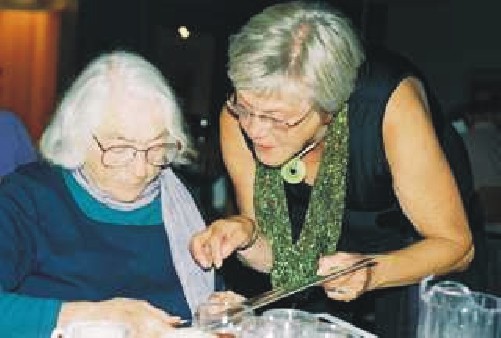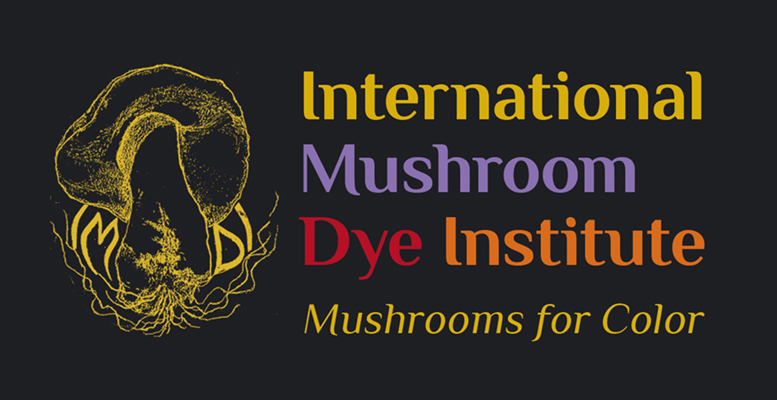
News from NORWAY – 2021
by Anna-Elise Torkelsen
Red gilled dye mushrooms
Red gilled mushrooms in the Cortinarius genus are argueably the most popular among ardent mushroom dyers. The caps are known to yield good red colours on wool and silk.
These mushrooms occur in coniferous forests in large amounts or as single individuals. But one thing that puzzles mushroom dyers is that the coloured results vary although the mushrooms the dyeing solution was made from, appeared to be identical. The coveted red colour on wool and silk varies! This phenomenon has been explained by variations in both the age of the mushrooms used and the ecology of the place they were found.
Project red gilled Cortinariae
Mushroom dyers are always hunting for new knowledge in respect of their pet subject, and in 2020 “The Norwegian Dyers’ Forum” started “Project red gilled Cortinariae”. The objects of the project are to identify the species of the red gilled Cortinariae we use for dyeing, the ecology where they were found and the morphological characters one may use to distinguish the various species. DNA sequencing of the species we have defined as C. semisanguineus consists of at least two different species, C. semisanguineus and C. ominosus, the latterbeing the most common.19 of the 37 collected samples in this project belonged to this species. The group may consist of more than these two species. Which species might they be? What is it dyers put in their dyeing pots?
17 collectors have so far participated in this project, and 37 samples were collected from all over Norway. These were sent to Balint Dima in Budapest, Hungary for DNA sequencing.
Four species
The sequencing results show that the mushroom we have collected in our country and determined to be Cortinarius semisanguineus consists of a group containing four different species:
Cortinarius cruentiphyllus
Cortinarius ominosus
Cortinarius semisanguineus
Cortinarius aff. semisanguineus
Results
From Cortinarius photographs and information from the collectors it appears that C. ominosus were the most common (19 of 37 samples collected). It is found all over Norway in coniferous forests of varying ecology. It appears, from information from the collectors and the photographs, that C. ominosus is pink to red at the base.
DNA sequencing show that C. semisanguineus is rare. Only 5 of the collected samples were identified as this species. The samples are from different parts of Norway, and they were all found in coniferous forests. C. semisanguineus is not the species the dyers thought they had collected and made innumerable dyeing baths from the time we began to dye with mushrooms in Norway; it is most likely that we mainly used C. ominosus.
Only one of the collected samples was identified as C. cruentiphyllus. The mushroom grew in a wet pine forest. Many Cortinarius (Dermocybes) have red gills, but this one has particularly dark red gills. The basis of the stem is yellow and turns to brown as it ages.
The fourth species in this red gill complex is Cortinarius aff. semisanguineus. 5 of the samples were identified as this. It is very similar to Cortinarius semisanguineus, but it has not yet been described. Balint Dima tells us that it has been found in Sweden, Estonia, Finland and Hungary. The Norwegian samples came from different parts of the country.
In many books the description of Cortinarius semisanguineus is most likely a description of Cortinarius ominosus, but also mixed up with characters which the other red gills in the group have. The species are morphologically very similar, and we have to ask ourselves which characters that separates them and which characters that can be ascribed to each species specifically. Shape and colour of cap, colour of stem, traces of veil on the stem and last, but not least, the colour of the gills must be scrutinized. Many characters have to be put together to ascertain a correct identification.
The information that the collectors have given about the ecology where the mushrooms were found are somewhat inadequate, thus making it difficult to say anything about any preference the different species may have in respect of ecology. But the number of samples is anyway far too small to be able to say anything about ecological preferences for each species. The four species are all found in coniferous forests, but coniferous forests differ, and may be one of the species may have a preference for mixed forests?
The project has so far revealed that the number of samples that have been DNA sequenced are too few to allow us to make descriptions which allows us to identify the various species. So far, we have only dried samples and photographs which is not sufficient to make complete descriptions of each species.The project will continue, and this autumn we will ascertain that fresh material will be correctly described and photographed before drying and sequencing.
Anna-Elise Torkelsen & Johs Bjørgo
Newsletter #1 from NORWAY – 2017
by Anna-Elise Torkelsen
Greetings from Norway from Anna-Elise Torkelsen!
The Norwegian Mushroom Dyers held their annual meeting on April 2th. Our group has 135 members and 52 of them joined this meeting. The topic for the main lecture was “Alpaca – natural luxury”. The lecturer, Line Werner, who owns 27 alpacas, is keeping them for their wonderful fibre which is soft and not itching. The alpaca fibres when mixed with 40% merino wool give ”a nice wool”.
Preben Graae Sørensen gave a lecture on “How chemical tools can control the dyeing with Dermocybes”. The pH is important for the dye result. Dried, crushed and then soaked mushrooms give more (stronger) colour to the fibres than fresh mushrooms. We had also some short “5 minutes”.
Gry Handberg showed pictures from the 14th IFFS, Ruth Solem told about her dyeing experiments with Hapalopilus rutilans.
Liza Johansson told how she extracts the pigments for the watercolour drawings that she makes, and Anna-Elise Torkelsen gave a resumé of the fish skin tanning workshop she attended at the 14th IFFS in Gysinge.
The board members for 2011-2012 are: Gry Handberg, Eldbjørg Johansen, Ruth Solem, Lise Walter and Anna-Elise Torkelsen (leader).
Experiments with cold mordant: Betsy Samuelsen who could not attend the April meeting is the only Norwegian dyer who has experimented with cold mordant, and she has sent me a few lines on her experiment. She used four mushrooms: Ischnoderma benzoinum, Hydnellum caeruleum, Hydnellum suaveolens and Hydnellum ferrugineum. She had one skein of ”cold mordant” yarn and one of “warm alum mordant” yarn together in the dye pot. The colours came out differently. The cold mordant yarn gave a slightly darker shade and a softer yarn, than the ordinary mordant yarn. The results: Greenish colours from the Hydnellums and light brown from the Ischnoderma.
